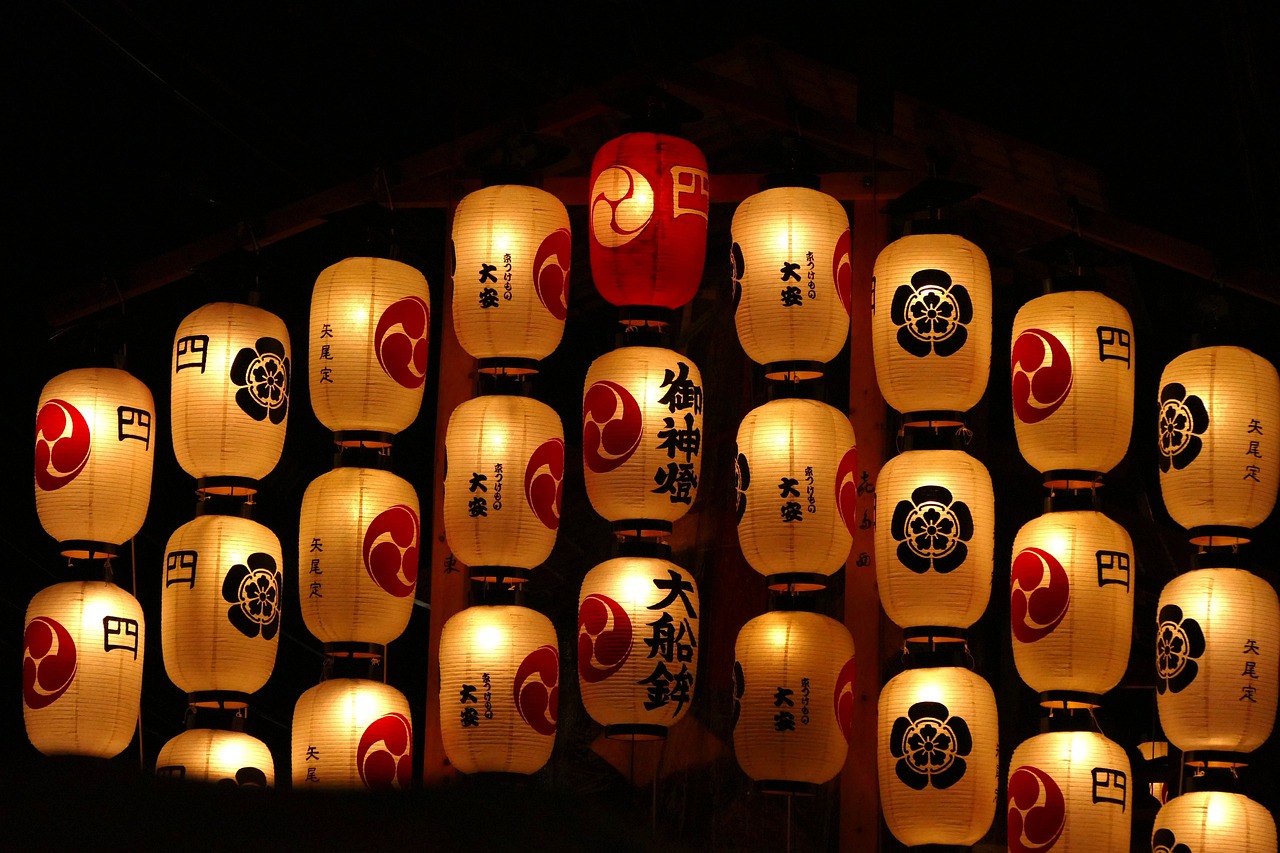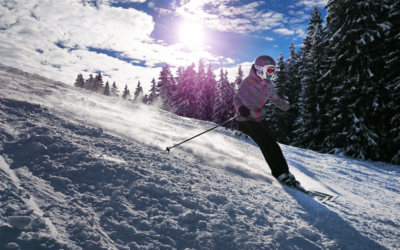As someone who is fascinated by the unique cultural experiences of different countries, you might be intrigued by the thought of attending festivals in Japan. You’ve probably heard tales of their vibrancy, tradition, and the fascinating blend of old and new that is so characteristic of Japan. But, have you ever wished for a comprehensive guide that would not just list these festivals but would also provide practical tips on how to enjoy them to the fullest? If your answer is yes, then this blog post is exactly what you need!
Japan, the land of the rising sun, boasts an array of cultural festivals known as ‘matsuri’ that range from peaceful lantern lit processions to energetic street dances. Steeped in history and tradition, these festivals reflect the heart and soul of Japanese culture and offer a once-in-a-lifetime experience that will surely leave you spellbound. Today, we’re going to embark on a virtual journey to explore the top must-attend festivals in Japan. We’ll delve into the stories behind these cultural events, discover what makes each of them unique, and most importantly, share insider tips on how to make the most of your festival experience. So, sit back, relax, and let us transport you to the bustling streets, serene temples, and joyous celebrations of Japan.
Gion Matsuri (Kyoto)
As you dip your toes into the enchanting world of festivals in Japan, there’s no better place to start than the grand Gion Matsuri held in Kyoto, the cultural capital of Japan. Ranked among the three most significant traditional festivals in the country, Gion Matsuri is a month-long spectacle that showcases a remarkable blend of history, culture, and community spirit. Celebrated every July, this is one festival you absolutely cannot miss if you’re planning a summer trip to Japan.
The Gion Matsuri finds its origins in the 9th century as a religious ceremony to appease the gods during the outbreak of a plague. Today, it has transformed into a much-awaited cultural event that encapsulates the quintessential charm of Kyoto. The festival is held in Yasaka Shrine and its surrounding areas in the Gion district, a place known for its preserved machiya houses and geisha culture.
Now, if you’re wondering how to enjoy this festival like a local, here’s where we reveal the best tips. The grandeur of Gion Matsuri unfolds through various events spread across the month, but the highlights are undoubtedly the Yoiyama evenings and the grand processions, Yamaboko Junko.
During the Yoiyama evenings leading up to the Yamaboko Junko, the streets of Gion come alive with vibrant food stalls, traditional games, and people clad in yukata, a casual summer kimono. To soak up this lively atmosphere, we recommend joining the locals in their yukata-clad night strolls. Make sure to indulge in the delicious festival food, try your hand at some traditional games, and enjoy the beautifully illuminated floats on display. This is also a perfect opportunity to explore the traditional machiya houses that open their doors for public viewing during these evenings.
Next up is the Yamaboko Junko, the highlight of the Gion Matsuri. This grand parade features two types of floats, the towering Yama and the magnificent Hoko, both boasting intricate decorations and designs. As the sound of traditional Gion-bayashi music fills the air, the procession of these floats creates a spectacular scene that’s nothing short of mesmerizing. To get the best viewing spot, make sure to arrive early, especially for the first parade on July 17. Also, remember to stay hydrated and protect yourself from the sun, as the summer in Kyoto can be quite hot.
Finally, a key aspect of enjoying Gion Matsuri is respecting the local customs and participating in the festivities in a responsible manner. After all, festivals in Japan are as much about community and harmony as they are about celebration and enjoyment.
Thus, Gion Matsuri promises an immersive cultural experience coupled with fun and excitement. From the traditional music and grand processions to the bustling night markets and exquisite cuisine, this festival is a celebration of all things Japanese and a must-add to your Japan itinerary.
Awa Odori (Tokushima)
Next on our list is Awa Odori, one of the most energetic and lively festivals in Japan. Held in the city of Tokushima on the island of Shikoku, this festival is a riotous celebration of dance and music that’s sure to get your feet tapping and heart pounding. Often referred to as “the fool’s dance,” Awa Odori is a part of the larger Obon festivities that honor the spirits of the ancestors. Celebrated in mid-August, the city comes alive with the sound of shamisen (a three-stringed traditional Japanese musical instrument), drums, and flutes, and the sight of participants performing the eponymous Awa dance.
Now, you might ask, what’s the best way to enjoy this rhythmic spectacle? Well, the answer is simple – join in! The beauty of Awa Odori lies in its inclusivity. Unlike certain traditional dances, Awa Odori doesn’t require years of training. The dance steps are simple, with a basic rule – while your right hand and foot go forward, your left hand and foot go backward. The traditional chant “Yatto-sa, Yatto-sa” accompanying the dance creates an infectious energy that is impossible to resist.
Thousands of dance troupes, known as ‘ren,’ take part in the festival, each dressed in distinctive colorful costumes. The performances by these dance troupes, especially the female dancers or ‘women’s dance,’ are indeed a sight to behold. But, remember, Awa Odori is as much about participation as it is about spectating. Most dance troupes welcome visitors to join them, so don’t be shy, put on a traditional yukata, and be a part of this exciting cultural event.
If you prefer watching, make sure to secure a spot at one of the paid seating areas where you can enjoy the best performances at a comfortable pace. Booking in advance is highly recommended as these seats get filled quite quickly. Also, explore the food stalls set up for the festival – trying out Tokushima’s local delicacies like Tokushima Ramen is a must.
In short, Awa Odori offers a perfect blend of culture, fun, and community spirit. Whether you choose to join the dance or prefer to enjoy it as a spectator, this festival promises an unforgettable experience. So, mark your calendars and get ready to dance your heart out at the Awa Odori Festival.
Sapporo Snow Festival (Sapporo)
Imagine an entire city transformed into a winter wonderland with massive, beautifully sculpted ice statues, some as tall as buildings, adorning its streets and parks. This is exactly what you would experience at the Sapporo Snow Festival, one of the most popular winter events in Japan. Held every February in Sapporo, the capital city of Hokkaido, this week-long festival attracts millions of visitors from all around the globe.
The Sapporo Snow Festival, or Yuki Matsuri as it’s locally known, was started by a group of high school students in 1950 who decided to build six snow statues in Odori Park. Over the decades, the festival has evolved into a grand event featuring hundreds of snow and ice sculptures spread across three main sites – Odori Park, Susukino, and Tsudome.
So, how can you make the most of this winter spectacle? The first and foremost tip is to dress warmly. The temperatures in Hokkaido during February can be quite chilly. Wear layers and don’t forget your hats, gloves, and scarves.
At Odori Park, you’ll find the largest snow sculptures, some as tall as 15 meters, depicting everything from famous landmarks and mythological creatures to scenes from popular movies. Taking a leisurely stroll through the park, particularly in the evening when the sculptures are lit up, is an experience you wouldn’t want to miss.
Susukino, Sapporo’s entertainment district, is the site for the Ice Sculpture Contest. Here, artists from around the world showcase their incredible skills and creativity. While you’re in Susukino, also take some time to enjoy the local food and drinks. Don’t miss out on Sapporo’s famous miso ramen, seafood, and of course, the local Sapporo beer.
The Tsudome site is all about family fun. From snow slides and rafting to food stalls and a snow maze, there’s something for everyone in the family to enjoy.
Lastly, consider volunteering at one of the community build-ups where everyone can participate in creating the smaller snow statues. Not only is it fun, but it also gives you a sense of the communal spirit that is at the heart of the Sapporo Snow Festival.
In conclusion, the Sapporo Snow Festival is more than just an exhibition of snow sculptures. It’s a celebration of art, community, and the joy of winter. Whether you’re a winter enthusiast or a first-time snow explorer, this festival is sure to leave you with warm memories to cherish.
Sanja Matsuri (Tokyo)
Let’s move now to Tokyo, the bustling capital of Japan, to attend the Sanja Matsuri – one of the city’s biggest and most vibrant Shinto festivals. Held at the Asakusa Shrine in May, this three-day event is a perfect blend of boisterous celebration and religious tradition. With millions of visitors each year, the Sanja Matsuri is definitely one for your Japan festival bucket list.
Sanja Matsuri is characterized by the procession of over a hundred mikoshi, portable shrines that serve as the divine palanquin of Shinto deities. The locals carry these ornate shrines around the Asakusa district in a joyful, often rowdy parade believed to bring blessings to the local community.
To enjoy the Sanja Matsuri, prepare yourself for an intense, high-energy atmosphere. The excitement reaches its peak on the third and final day of the festival when three main mikoshi make their appearance, each representing one of the three founders of Asakusa Shrine. The spectacle of thousands of people carrying these sacred shrines, to the beats of traditional music, creates an electrifying ambiance.
While the mikoshi parade is the main highlight, there are other attractions too. Explore the numerous food stalls serving traditional festival food like yakitori (grilled skewers), takoyaki (octopus balls), and cotton candy. Check out the traditional performances, including taiko drumming and lion dances. And if you’re up for it, join the locals in carrying the mikoshi – it’s an unforgettable, albeit strenuous experience.
Remember, the Sanja Matsuri can get very crowded, especially on the third day. So, plan your visit accordingly. Arrive early to secure a good viewing spot and wear comfortable shoes. And while the festival is known for its energetic atmosphere, always maintain respect for the local customs and traditions.
In a nutshell, Sanja Matsuri is a celebration of community, tradition, and the lively spirit of Tokyo’s Asakusa district. With its high-energy parades and delicious street food, this festival promises a cultural experience like no other. It’s your chance to witness the traditional side of Tokyo amidst the city’s modern hustle and bustle.
Takayama Matsuri (Takayama)
Our next festival takes us to the charming town of Takayama, nestled in the heart of the Japanese Alps. The Takayama Matsuri, held twice a year in spring and autumn, is widely regarded as one of the most beautiful festivals in Japan. With its meticulously crafted festival floats, spectacular marionette performances, and the stunning backdrop of Takayama’s old town, this festival offers a feast for the senses.
The Spring Takayama Matsuri, also known as Sanno Matsuri, takes place on April 14th and 15th to pray for a good harvest, while the Autumn Takayama Matsuri, or Hachiman Matsuri, celebrated on October 9th and 10th, gives thanks for the harvest. Both festivals are centered around the procession of a dozen or so Yatai (festival floats), each decorated with intricate carvings, metalwork, and lacquerware.
To enjoy the Takayama Matsuri, begin your day by exploring the float exhibition that happens in the morning. Marvel at the elaborate craftsmanship of the Yatai and don’t miss the Karakuri (marionette) performance, a traditional puppet show where the marionettes are maneuvered using strings and mechanical devices. It’s a rare art form and a unique spectacle you can’t afford to miss.
In the afternoon, prepare for the highlight of the festival – the grand parade of the Yatai. As the sound of traditional festival music fills the air, the floats are pulled through the streets of Takayama’s beautifully preserved old town. Make sure to secure a good viewing spot early on as the streets tend to get crowded.
During the night, the floats are illuminated with hundreds of lanterns, creating a dreamy, ethereal atmosphere. A stroll around the town during this time is an absolute must-do. Also, make time to try Hida Beef, a local specialty, and other festival foods.
Finally, consider visiting the Takayama Festival Floats Exhibition Hall where you can learn more about the history and craftsmanship of the Yatai. It’s a great way to appreciate the incredible effort and skill that go into creating these masterpieces.
To sum up, the Takayama Matsuri is a sublime blend of art, tradition, and community spirit. Amidst the scenic beauty of Takayama, this festival offers an enchanting glimpse into Japan’s rich cultural heritage.
Kanda Matsuri (Tokyo)
Next up, we’re heading back to Tokyo for Kanda Matsuri, one of the city’s three greatest Shinto festivals alongside Sanja Matsuri and Sanno Matsuri. Held in mid-May during odd-numbered years, this grand festival takes place in the Kanda Myojin Shrine and spills over to the streets of Akihabara, Kanda, and Nihonbashi.
Kanda Matsuri is a celebration dedicated to the guardian deity of the city’s inhabitants and local businesses. The festival highlights include a massive procession of mikoshi (portable shrines), traditional music and dance performances, parades featuring samurai and geisha, and horseback archery.
The main procession, which happens on the festival’s first day, is a grand spectacle where about a hundred mikoshi, accompanied by thousands of participants in traditional attire, marched through the streets. It’s a vivid scene that harks back to the grandeur of the Edo period.
To make the most of Kanda Matsuri, arrive early to get a good viewing spot for the main procession. It’s a long event, so make sure to wear comfortable shoes, and carry sunblock and a hat to protect yourself from the sun.
As the procession winds its way through Akihabara, take this opportunity to explore this fascinating district known for its vibrant anime and electronics scene. Blend the traditional with the modern by checking out the unique shops and cafes in the area.
Throughout the festival, you’ll also find various performances, including traditional dances and music at the Kanda Myojin Shrine. Don’t forget to try the food stalls selling classic festival food like yakisoba (fried noodles), takoyaki, and yakiniku (grilled meat).
On the last day, make sure not to miss the thrilling horseback archery event. It’s a unique experience where archers demonstrate their skills while riding at full gallop – a nod to Japan’s historic samurai culture.
In essence, Kanda Matsuri offers a magnificent fusion of historical grandeur and lively celebration. Whether you’re a history buff, a culture enthusiast, or simply looking to have a good time, this festival has something to offer everyone.
Nebuta Matsuri (Aomori)
Let’s journey now to the northern reaches of Japan’s main island to the city of Aomori, home to one of the country’s most visually stunning festivals – the Nebuta Matsuri. Held from August 2nd to 7th every year, this summer festival is known for its breathtaking illuminated floats, lively music, and energetic dancers.
The heart of Nebuta Matsuri is the spectacular parade of gigantic Nebuta floats. These are enormous lantern-like structures made of wireframes, and washi paper, and painted with vibrant colors. The floats often depict scenes and characters from Japanese mythology and historical dramas. At night, they’re illuminated from the inside, creating a breathtaking spectacle as they navigate through the city streets.
As a visitor, you can enjoy Nebuta Matsuri in several ways. First and foremost, secure a spot along the parade route to marvel at the beautiful Nebuta floats. The processions take place every evening of the festival, with the most elaborate parade happening on the last night.
Second, consider donning a traditional yukata and becoming a “haneto” or a Nebuta dancer. This is a unique opportunity where everyone, even visitors, is encouraged to join the parade and dance around the floats. The haneto dance is quite simple, mainly involving jumping and chanting, and adds to the festive spirit of the occasion.
Be sure to also explore the food stalls serving a variety of local foods. Try some Aomori favorites like tuna donburi or apple cider, as Aomori is famous for its apples.
And finally, the festival concludes with a fantastic fireworks display over Aomori Bay on the final night. It’s an enchanting ending to an unforgettable event.
In conclusion, Nebuta Matsuri is a beautiful fusion of art, music, dance, and local culture. The magnificent Nebuta floats and the spirited energy of the festival make it a captivating experience that is sure to leave you with lasting memories.
Tenjin Matsuri (Osaka)
Our festival journey now takes us to the lively city of Osaka for the Tenjin Matsuri. Held on July 24th and 25th every year, it’s one of Japan’s top three festivals along with Kyoto’s Gion Matsuri and Tokyo’s Kanda Matsuri. Tenjin Matsuri is a 1000-year-old festival that involves a land procession, a river procession, traditional music, and dance, and concludes with a breathtaking fireworks display.
Tenjin Matsuri is held in honor of Sugawara Michizane, the deity of learning and scholarship, at Osaka’s Tenmangu Shrine. The festival’s main attraction is the grand procession, where the deity is paraded through the city streets and along the Okawa River. This spectacle involves over 3000 participants dressed in traditional costumes, carrying portable shrines, and lanterns, and performing traditional arts.
One of the best ways to enjoy the Tenjin Matsuri is to find a good spot along the procession route. The parade offers a spectacular view of various cultural performances such as kagura (sacred Shinto music and dance), bunraku (puppet theater), and taiko drumming.
Don’t miss the unique river procession, known as Funatogyo, where the procession continues onto boats. The sight of countless illuminated boats gliding on the Okawa River creates a mesmerizing atmosphere. The reflection of lantern lights on the water, combined with traditional music echoing in the air, makes it a truly magical experience.
While in Osaka, be sure to indulge in the city’s famous street food. Try local favorites like takoyaki (octopus balls), okonomiyaki (savory pancakes), and kushikatsu (deep-fried skewers). Festival stalls, or yatai, line the streets offering these delicious treats.
The festival culminates in a dazzling fireworks display over the Okawa River. Watching the sky light up with myriad colors over the tranquil river is the perfect way to end the festivities.
In summary, Tenjin Matsuri offers an immersive cultural experience, showcasing the religious traditions, community spirit, and vibrant energy of Osaka. It’s truly a spectacle you wouldn’t want to miss.
Nada no Kenka Matsuri (Himeji)
For our final stop, we’re heading to the city of Himeji in Hyogo Prefecture for the Nada no Kenka Matsuri. Held on October 14th and 15th every year, this “fighting festival” is a thrilling spectacle known for its dynamic display of power and courage. It’s a stark departure from the more serene and formal traditional festivals, offering a unique experience.
Nada no Kenka Matsuri takes place at the Matsubara Hachiman Shrine and involves fierce competition between teams carrying massive mikoshi (portable shrines). The highlight of the festival is when these mikoshi, weighing over a ton each, are crashed into each other in a show of strength and endurance. This ritual is said to bring good luck and a bountiful harvest.
The best way to enjoy Nada no Kenka Matsuri is to be in the heart of the action. Find a spot near the shrine where the ‘fights’ take place. Be ready for an intense atmosphere as the teams jostle for supremacy. But be mindful and keep a safe distance as the situation can get quite rowdy.
Additionally, try to catch the mikoshi parade, where beautifully decorated portable shrines are carried through the streets to the sound of traditional music and chants. It’s a contrast to the action-packed ‘fighting’ part of the festival and gives a glimpse into the more traditional aspect of the festival.
Don’t forget to indulge in delicious local street food. Festival food stalls offer a variety of delicacies from yakitori (grilled chicken skewers) and takoyaki (octopus balls) to kakigori (shaved ice dessert).
In a nutshell, Nada no Kenka Matsuri is a high-energy festival that offers a different perspective on Japan’s cultural traditions. It’s an adrenaline-fueled event that showcases the spirited community of Himeji, making it a must-attend for those looking for an extraordinary festival experience.
There you have it! Must-attend festivals in Japan, each offering a unique and exciting experience. So, get ready to immerse yourself in the rich cultural tapestry of Japan through its vibrant and diverse festivals.
We welcome any suggestions or questions. You can email us or contact us using the contact page.
You can also connect with us on the following social networks:









0 Comments